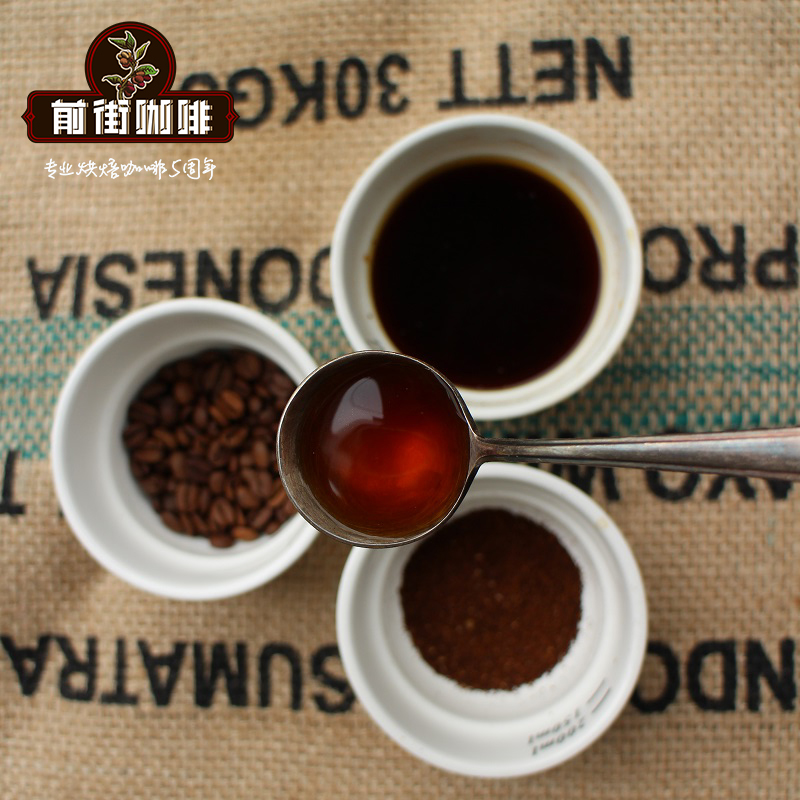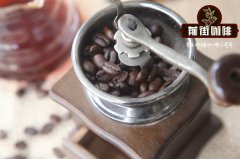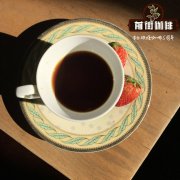How much is a cup of coffee? What kind of coffee tastes better, Yega Chuefei or Sidamo?

Professional coffee knowledge exchange more coffee bean information please follow the coffee workshop (Wechat official account cafe_style)
Many enthusiasts can't tell the difference between the two producing areas of [Yegashafi Coffee] and [Sidamo]. They both belong to Ethiopia. Generally speaking, Sidamo is a province. Yedamo is a town in Sidamo province. Sidamo is 2100 meters above sea level. Yega's producing area is higher above sea level, the highest elevation is more than 2600 meters, and it is also much higher than Sidamo. Let's start with Ethiopia.
● Ethiopia
Ethiopia is located in a country full of wonders, where Arabica coffee comes from. The Kaffa Forest is the beginning of everything. Kaffa is located in the southwest of Ethiopia.
In the centuries-long natural evolution of Kaffa, about 5000 species of coffee have been born. At present, the local community manages about 12000 hectares of Kaffa wild coffee area. Through the introduction of participatory forest management (Participatory Forest Management, or PFM), about 4500 farmers have the right to legally harvest wild coffee cherries and have an obligation to protect the forest.
As for Kaffa, it is rumored that it was the first place to brew coffee, and for coffee people, it is as fascinating as the Garden of Eden.
In Kaffa, an area called Bonga, more than 100 Ethiopians are dedicated to growing high-quality Arabica coffee. Here has an excellent coffee growing environment, elevation between 1600-1900 meters, red soil, suitable temperature. The region has high rainfall, so it is considered to be one of the areas with the highest rainfall in Ethiopia. As one of the first two biological conservation circles in Ethiopia, Gesha is known as a region of Kaffa.
Kaffa coffee (originally Kaffa types) usually includes: Gimbo, Gewata and Chena. "
Coffee cultivation in ● Ethiopia
Since Ethiopia changed the administrative division around 1995, the greatest impact on the coffee area is that the original Sidamo Sidamo province is divided into the new Sidamo Sidama (the original minority), and most of it is classified into the Oromia Oromia state, and Yegashifi, which used to belong to the Sidamo province, is now included in the new Gaio district Gedeo.
Now there will be a mixture of new and old regional names in the Ethiopian coffee products in circulation on the market. here we take the new regional division as the benchmark, combined with the administrative area to understand the coffee growing map of Ethiopia.
Most of the coffee cultivation of [Sidamo] and [Yega Chuefei Coffee] belongs to the pastoral coffee model, in which coffee farmers plant coffee trees near their living areas and harvest them during the harvest season. it is then sent to a nearby treatment plant built on water for unified treatment (or purchased by a middleman). In addition to a small number of plantations that have the strength to grow, pick and handle raw coffee beans independently, many coffee beans from different regions and varieties will be centrally processed by the processing plant and then sent to the auction house for official evaluation and grading.
This is one of the reasons why many Ethiopian coffee beans are named after processing plants or cooperatives, and it is also one of the reasons why the same batch of coffee beans are mixed with multiple coffee varieties. even the flavor of different batches of coffee beans produced by the same treatment plant will be significantly different.
If we want to buy coffee from Ethiopia, there are usually three channels.
● Farmers' Cooperative Union (coffee comes from subordinate cooperatives, small farmers)
● exporters (intermediaries, purchasing from ECX or local coffee markets)
Large ● public or private plantations (exporters of coffee produced and sold by themselves)
Farmers' Cooperative Union Farmers' Cooperative Union
In order to facilitate the direct export of farmers' cooperatives, farmers' cooperatives in various places have gathered and formed their own cooperative alliances. There are now six cooperative alliances (Farmers' Cooperative Union) in Ethiopia, namely
● Oromia Coffee Farmers Cooperative Union (OCFCU)
● Sidama Coffee Farmers Cooperative Union (SCFCU)
● Yirgacheffe Coffee Farmers Cooperative Union (YCFCU)
● Kafa Forest Coffee Farmers Cooperative Union (KFCFCU)
● Bench Maji Coffee Farmers Cooperative Union (BMCFCU)
● Tepi Coffee Farmers Cooperative Union (TCFCU)
The advantage of cooperative alliance is to combine scattered small farmers and cooperatives to form a large collective, participate in international projects, such as Firetrade, provide a unified export to contact buyers, pay a certain proportion of the harvest to cooperatives, cooperatives deduct management costs, retain part for community development, and pay the rest to small farmers, so that small farmers can get more stable and convenient income. To cope with the cost of planting and living, this is why more and more small farmers are willing to join cooperatives.
The coffee grade of ● Essel
The score of raw bean:-Q1 is the highest, followed by Q2.
-common in China, only G1G4 classification →, regardless of washing or sun-drying beans, the choice of G1 should be able to get less defect rate and delicious coffee beans.
ECX has a further way to classify beans according to their own grades. Not the familiar "Yega Sheffield G1" or "Yega Sheffield G2". Fresh coffee beans harvested in that year must first make a primary score and get a G1-G3 rating before they will be further divided into Q1 and Q2 grades by testing the quality of coffee beans with SCAA cups.
Ye Jia Xuefei Coffee and washed beans
Ye Jia Xuefei Coffee Sun Bean
The highest grade of Q1: coffee beans with a score of more than G1 or G280 in the primary score and more than 85 points in the boutique grade. For the highest grade coffee beans.
Q2 highest grade: G1 or G2 coffee beans in the primary score + boutique score 80 ~ 84.75. It is the second highest grade coffee bean.
● about the two producing areas of [Yega Chefe Coffee] and [Sidamo]
These four major planting systems are distributed in the following nine major producing areas of Ethiopia: Jinma, Sidamo, Yegashifi, Hara, Lim, Iruba, Gimbi (Lekanti), Tibby, and Bebeca.
Yejia Xuefei Coffee (boutique producing area): 1800m-2000m above sea level | Pastoral coffee system |
Yega Xuefei is affiliated to the Sidamo producing area, which is separated separately because of its unique flavor. In addition to the small town of Yega Xuefei, it also includes three by-product areas around Wenago, Kochere, Gelena and Abaya. Therefore, Yirgacheffe A, Wenago A, Kochere An and Gelena/AbayaA will be more expensive than the same name B in the new Yega Sheffield coffee grading system. In addition to washing and tanning, the recently launched semi-washed Yega Chevy Coffee is also worth a try.
Yejia Xuefei coffee body variety is a local native species, small grain species, the appearance is more round, the bean body is very small, mostly between 14 and 15 orders.
Sidamo (boutique producing area): 1400-2200m above sea level | Pastoral coffee system |
The flavor is similar to Yega Chuefei Coffee, delicate washing or sun-drying Sidamo, the same scent of flowers and oranges, the price is as good as Yega Chuefei. The varieties in the two producing areas are similar, with medium-sized beans but also small seeds of dwarf plants, which farmers often sell separately. Common Kurmie, poor disease resistance; Wolisho; tall and strong; Deiga, medium tree shape, these three species are the main force of the boutique tanning series Beloya and Aretha.
The bean body is smaller than Longberry.
Nearly 2000 coffee varieties have been recorded in Ethiopia, including 1927 native varieties and 128 imported varieties. So just by looking at the appearance, Esther's coffee variety is "Grand View Garden", which has everything, long, short, thin, fat.
Long particles are found in all coffee growing areas in Ethiopia. From the actual proportion seen, there are more long particles in the western Jimma, including Limmu and Kaffa, and less in sidama (Sidamo) or yirgacheffe (Yega Sheffield).
Small particle species, the appearance is relatively round, the bean body is very small, mostly between 14-15 orders, this variety should be the most familiar to us, in Sidamo and Yegashiri can often see their figure, I have also seen in a harrar sample, also seen in Jimma local sales of coffee beans, compared to other regions, sidama and yigracheffe and surrounding arsi, guji have more native varieties of this small particles.
On the ● flavor
Yega Xuefei caffeine has unique jasmine aroma, bright and lively citrus acid and black tea texture.
Sidamo is full of berries and tropical fruits.
Ye Jia Xuefei Coffee Brand recommends:
There are large and small villages, micro-producing areas, cooperatives and treatment stations under Yejashafi. In most parts of Ethiopia, coffee farmers are still living a very difficult life, and they do not have enough capacity to build family-style processing works. as a result, there will be many treatment stations that focus on buying coffee fruits from nearby small farmers, processing them, and then selling them to raw bean merchants. Therefore, the quality of Yejia Xuefei coffee will be uneven, if you want to find a good quality Yega Xuefei coffee, without a pair of eyes, it is recommended to choose a brand with high reputation.
Yega Chuefei Coffee of Qianjie Coffee is fully guaranteed in terms of brand and quality. And more importantly, the performance-to-price ratio is extremely high, 227 grams per bag, the price is only 85-95 yuan. According to the calculation of 15 grams of coffee beans per cup, a bag can make 15 cups of coffee, which costs only about 6 yuan per cup.
Important Notice :
前街咖啡 FrontStreet Coffee has moved to new addredd:
FrontStreet Coffee Address: 315,Donghua East Road,GuangZhou
Tel:020 38364473
- Prev

What is the price of Yejasuefi coffee beans are expensive? Yeah, how much is a cup of Xuefei?
Professional coffee knowledge exchange more coffee bean information please follow the coffee workshop (Wechat official account cafe_style) you want to learn to brew coffee, you must first learn to taste coffee, but also try to drink different types of coffee. Well, yes, different types of coffee. Today, let's talk about how, as rookies who know nothing about coffee, we should go step by step.
- Next

Is the coffee bean expensive? is it good? how to make Ethiopia Yega Chefe Coffee Flavor
Professional Coffee knowledge Exchange for more information on coffee beans, please visit Coffee Workshop (Wechat official account cafe_style) ETHIOPIA,YIRGACHEFFE,CherryRed Yega Xuefei Coffee Red Cherry G101 | production area profile unique geographical environment Yega Xuefei Yi
Related
- Detailed explanation of Jadeite planting Land in Panamanian Jadeite Manor introduction to the grading system of Jadeite competitive bidding, Red bid, Green bid and Rose Summer
- Story of Coffee planting in Brenka region of Costa Rica Stonehenge Manor anaerobic heavy honey treatment of flavor mouth
- What's on the barrel of Blue Mountain Coffee beans?
- Can American coffee also pull flowers? How to use hot American style to pull out a good-looking pattern?
- Can you make a cold extract with coffee beans? What is the right proportion for cold-extracted coffee formula?
- Indonesian PWN Gold Mandrine Coffee Origin Features Flavor How to Chong? Mandolin coffee is American.
- A brief introduction to the flavor characteristics of Brazilian yellow bourbon coffee beans
- What is the effect of different water quality on the flavor of cold-extracted coffee? What kind of water is best for brewing coffee?
- Why do you think of Rose Summer whenever you mention Panamanian coffee?
- Introduction to the characteristics of authentic blue mountain coffee bean producing areas? What is the CIB Coffee Authority in Jamaica?

